概述
什么是Maven?
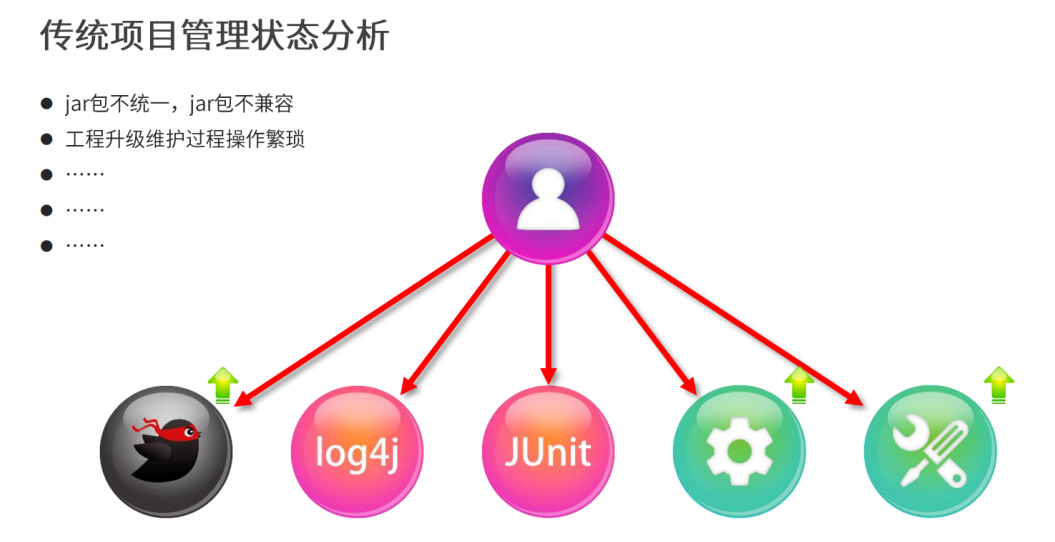 Maven 的正确发音是[ˈmevən],Maven在美国是一个口语化的词语,代表专家、内行的意思。 一个对 Maven 比较正式的定义是这么说的:
Maven 的正确发音是[ˈmevən],Maven在美国是一个口语化的词语,代表专家、内行的意思。 一个对 Maven 比较正式的定义是这么说的:
Maven 是一个项目管理工具,它包含了一个项目对象模型 (POM:Project Object Model),一组标准集合,一个项目生命周期(Project Lifecycle),一个依赖管理系统(Dependency Management System)和用来运行定义在生命周期阶段(phase)中插件(plugin)目 标(goal)的逻辑。
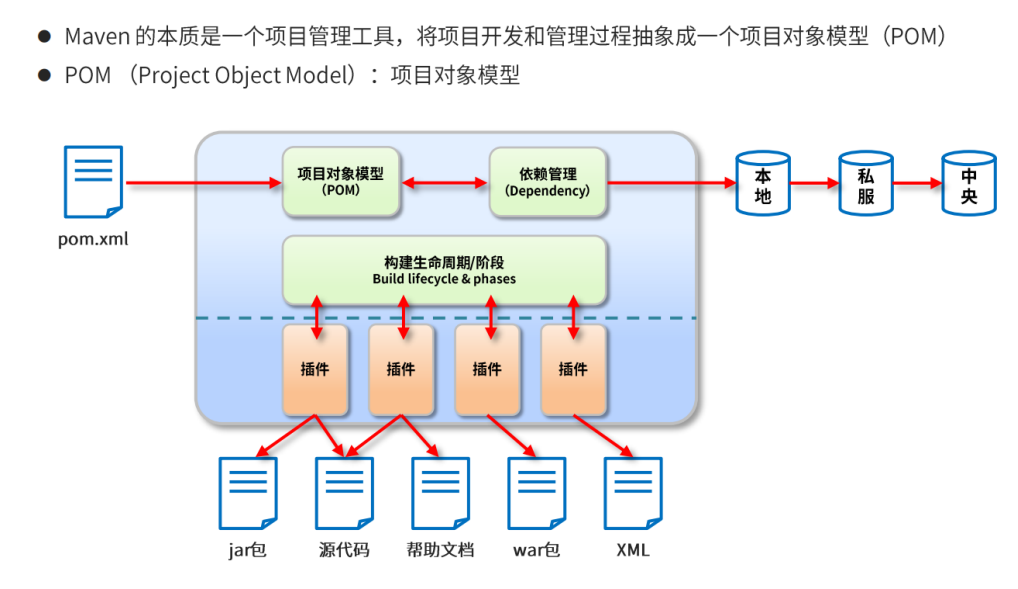
Maven的作用
- 项目构建:提供标准的、跨平台的自动化项目构建方式
- 依赖管理:方便快捷的管理项目依赖的资源(jar包) ,避免资源间的版本冲突问题
- 统一开发结构:提供标准的、统一的项目结构
Maven的使用
Maven软件的下载
官网地址:http://maven.apache.org/
为了使用Maven管理工具,我们首先要到官网去下载它的安装软件,通过百度搜索Maven点击Download链接,就可以直接进入到Maven软件的下载页面
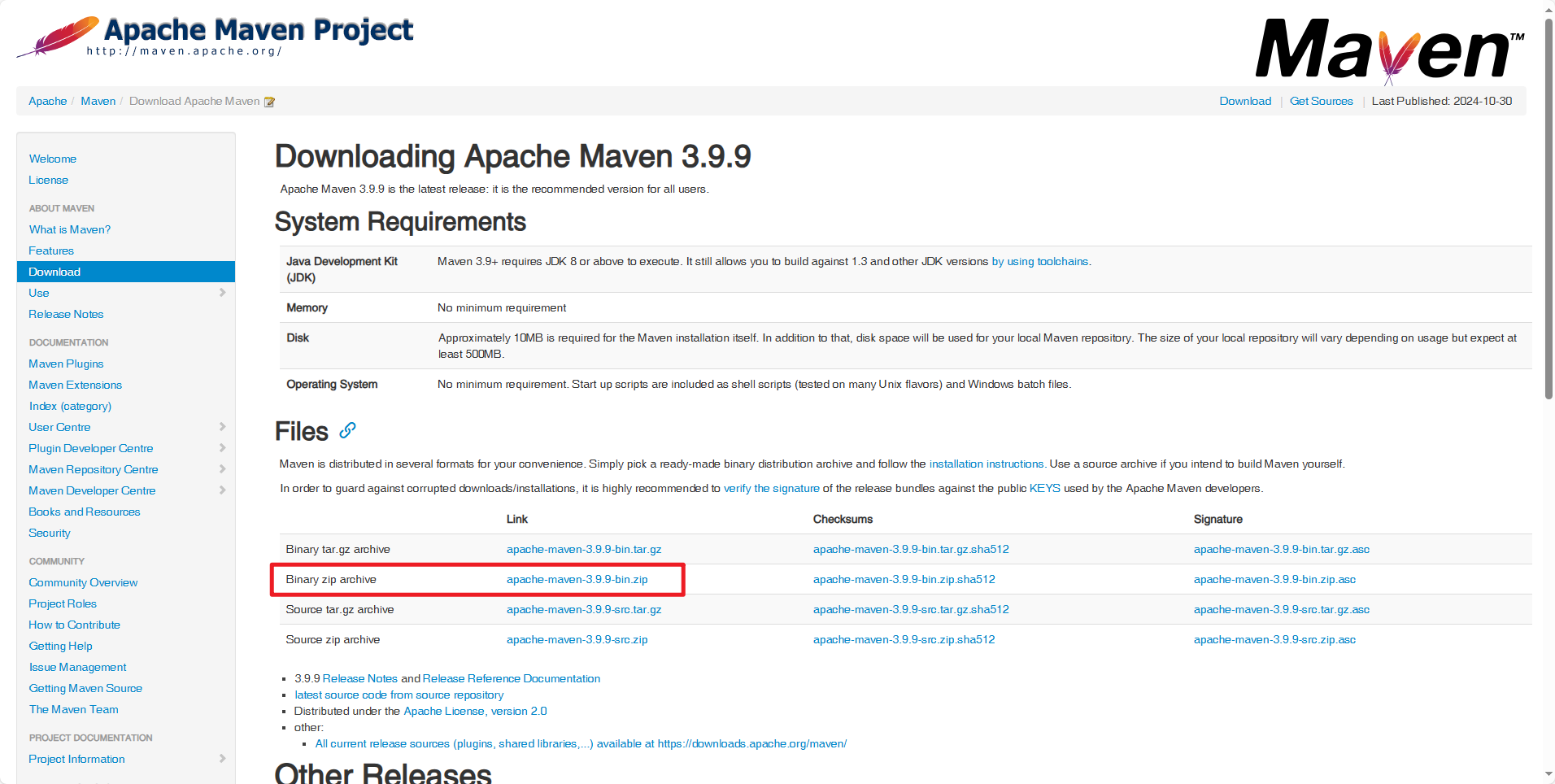
我们这里使用Maven3.6.3版本作为我们的软件:
apache-maven-3.6.3.rar
Maven软件的安装
Maven下载后,将Maven解压到一个没有中文没有空格的路径下
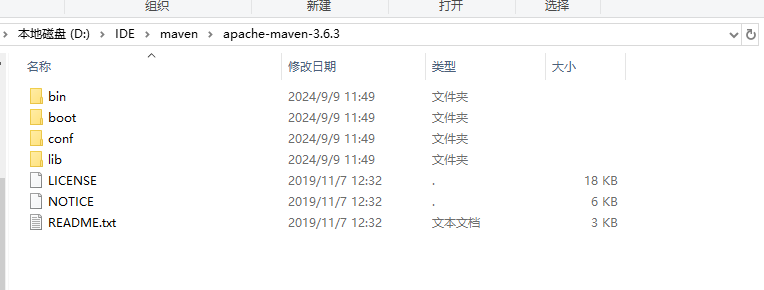
解压后目录结构如下:
- bin:存放了maven 的命令,比如我们前面用到的 mvn tomcat:run
- boot:存放了一些 maven 本身的引导程序,如类加载器等
- conf:存放了 maven 的一些配置文件,如 setting.xml 文件
- lib:存放了 maven 本身运行所需的一些 jar 包
配置JDK版本
JDK使用JDK1.8版本
配置Maven
配置 MAVEN_HOME ,变量值就是你的 maven 安装 的路径(bin 目录之前一级目录)
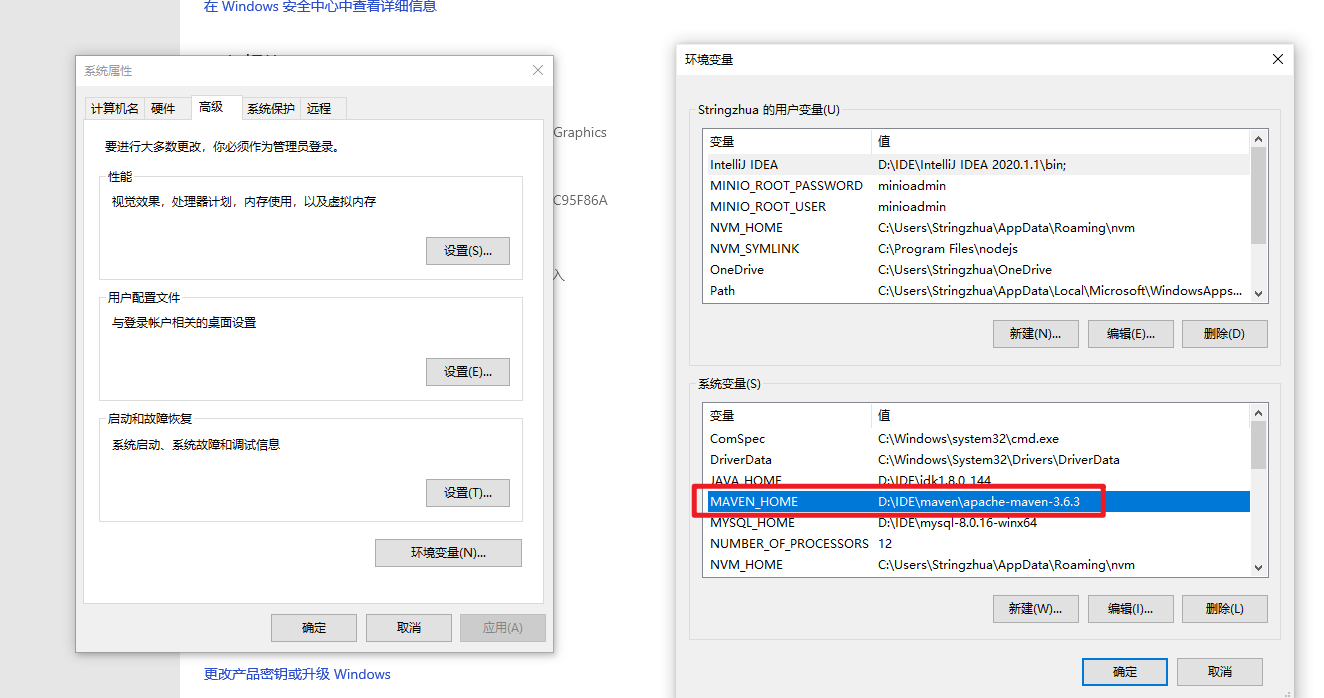
上面配置了我们的 Maven 软件,注意这个目录就是之前你解压 maven 的压缩文件包在的的目录,最 好不要有中文和空格,其次打开path环境变量在value后面添加:%MAVEN_HOME%\bin
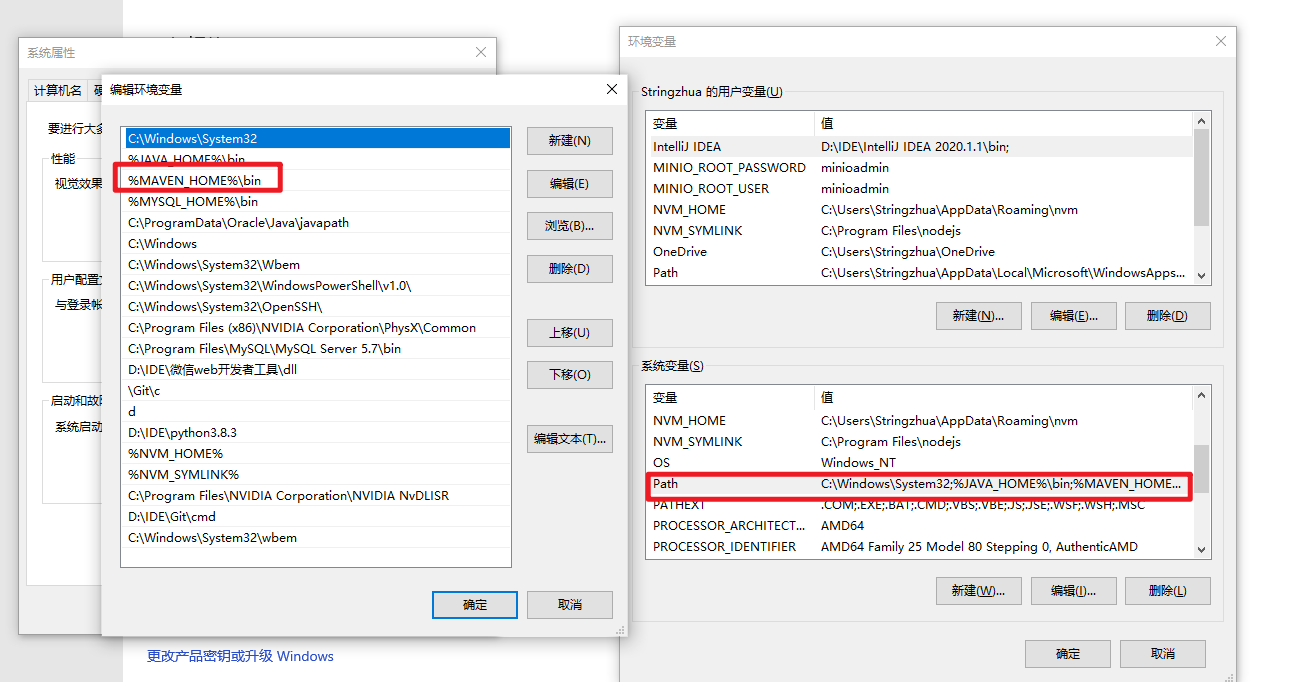
测试配置环境变量是否成功
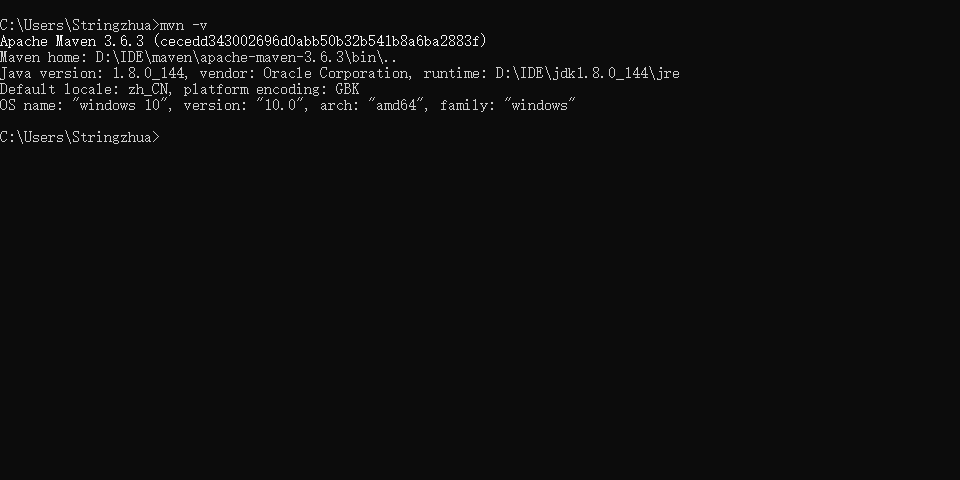
通过 mvn -v命令检查 maven 是否安装成功
通过mvn指令完成初始化,可在默认磁盘生成隐藏文件夹.m2 作为本地仓库
Maven仓库的概念
仓库
用于存储各种资源,包含各种jar包
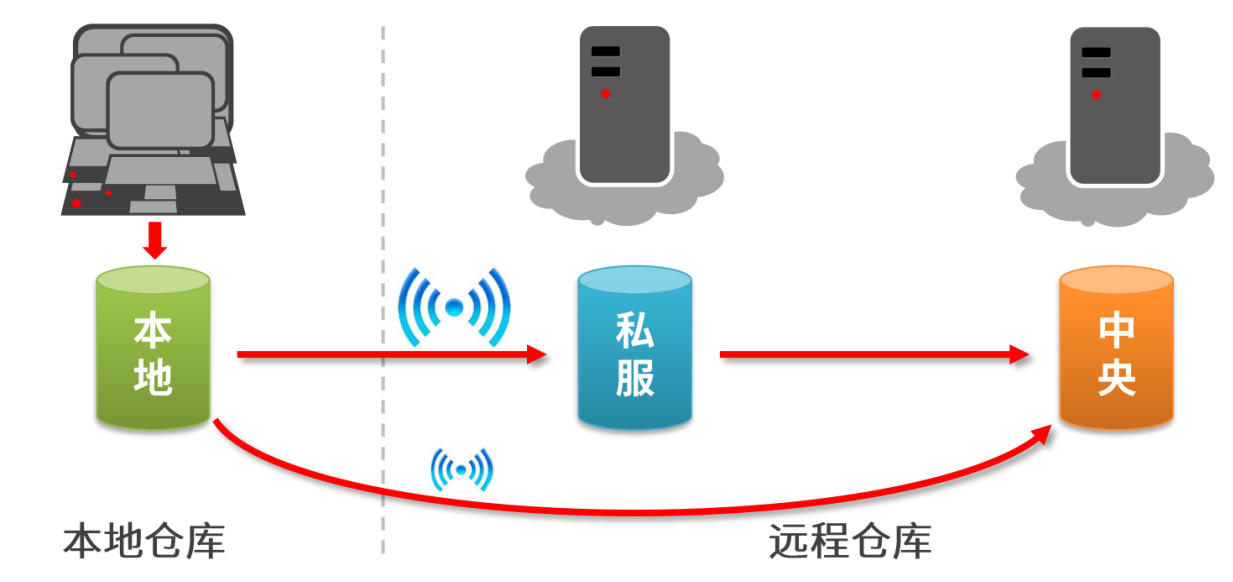
**本地仓库: **存储从远程仓库或中央仓库下载的插件和 jar 包,项目使用一些插件或 jar 包优先从本地仓库查找默认本地仓库位置在 u s e r . d i r / . m 2 / r e p o s i t o r y , {user.dir}/.m2/repository, user.dir/.m2/repository,{user.dir}表示 windows 用户目录
远程仓库: 中央仓库,服务于整个互联网,它是由 Maven 团队自己维护,里面存储了非常全的 jar 包它包含了世界上大部分流行的开源项目构件。
- 中央仓库: Maven团队维护,存储所有资源的仓库
- 私服:部门/公司范围内存储资源的仓库,从中央仓库中获取
私服的作用:
- 保存具有版权的资源,包含购买或自主研发的jar
而中央仓库的jar都是开源的,不能存储具有版权的资源
- 仅在一定范围内共享资源,仅对内部开放,不对外共享
坐标
什么是坐标?
Maven中的坐标是用于描述仓库中资源的位置https://mvnrepository.com/
Maven坐标的主要组成
- groupld:定义当前Maven项目隶属组织名称(通常是域名反写,例如: org.mybatis)
- artifactld:定义当前Maven项目名称(通常是模块名称,例如CRM、SMS)
- version:定义当前项目版本号
- packaging:定义该项目的打包方式
Maven坐标的使用
使用唯一标识,唯一性定位资源位置,通过该标识可以将资源的识别与下载工作交由机器完成。
仓库配置
本地仓库配置:

远程仓库配置:
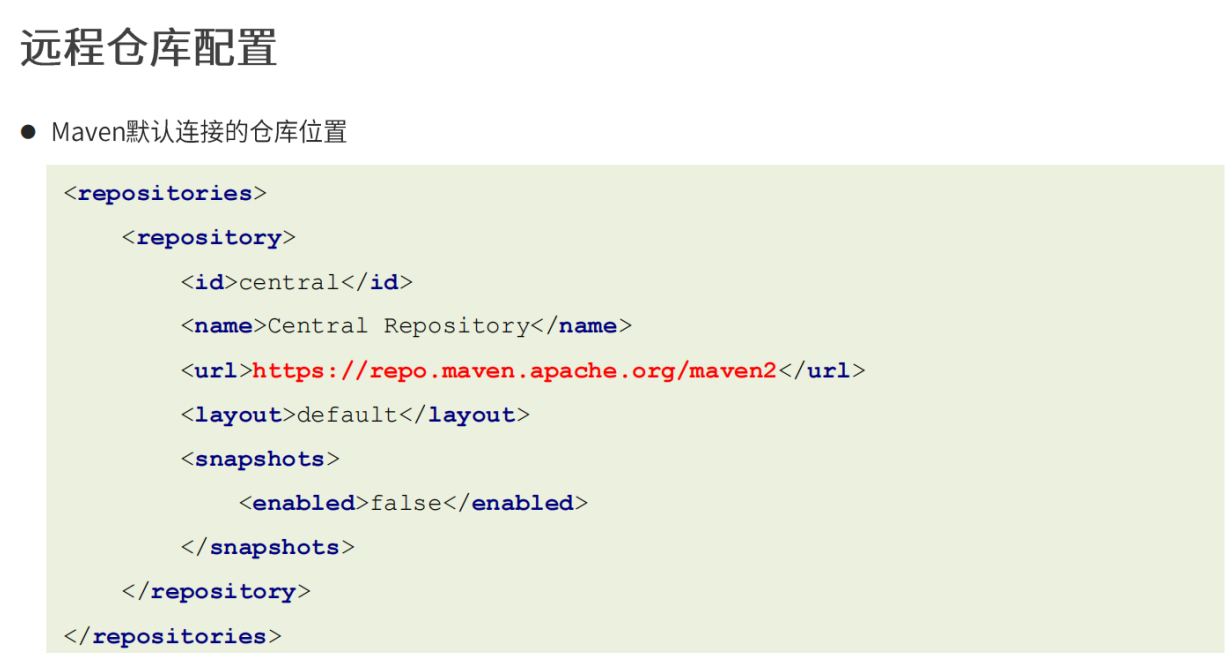
镜像仓库配置:
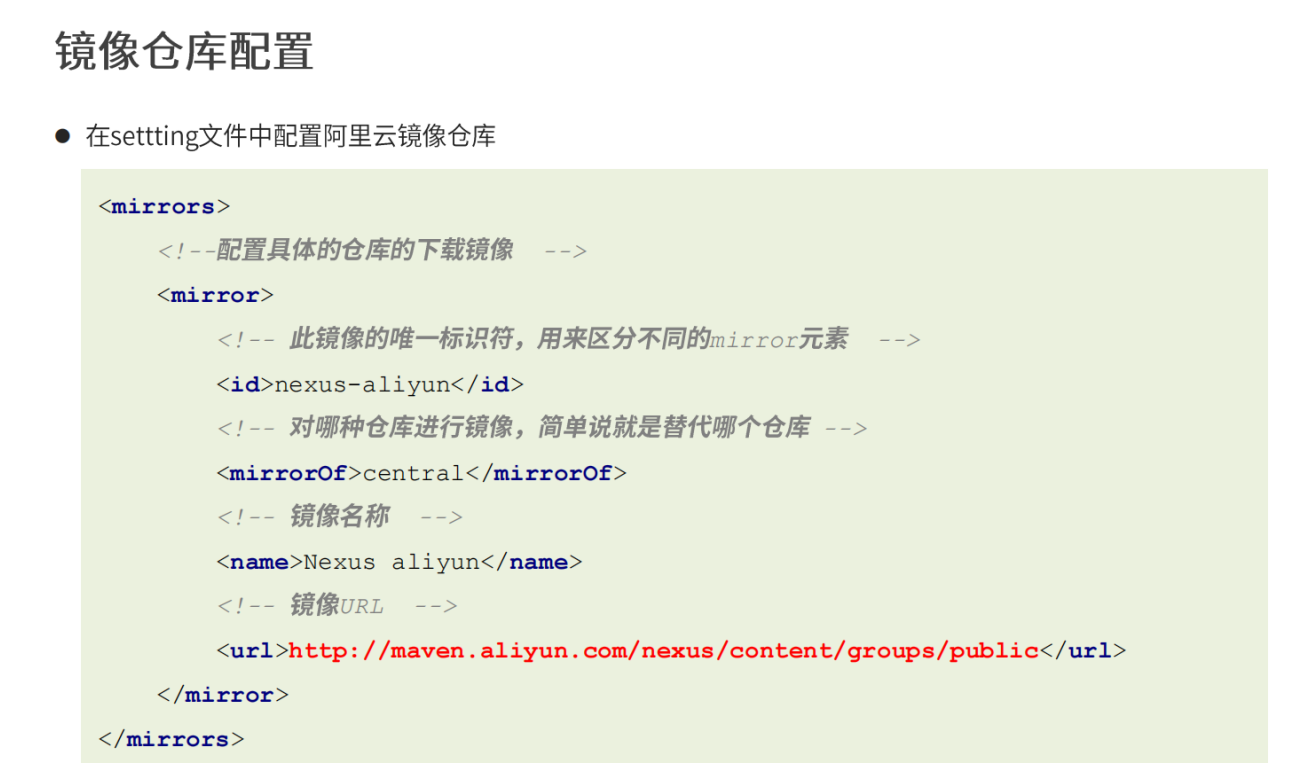
我的配置文件:
<?xml version="1.0" encoding="UTF-8"?><!--
Licensed to the Apache Software Foundation (ASF) under one
or more contributor license agreements. See the NOTICE file
distributed with this work for additional information
regarding copyright ownership. The ASF licenses this file
to you under the Apache License, Version 2.0 (the
"License"); you may not use this file except in compliance
with the License. You may obtain a copy of the License athttp://www.apache.org/licenses/LICENSE-2.0Unless required by applicable law or agreed to in writing,
software distributed under the License is distributed on an
"AS IS" BASIS, WITHOUT WARRANTIES OR CONDITIONS OF ANY
KIND, either express or implied. See the License for the
specific language governing permissions and limitations
under the License.
--><!--| This is the configuration file for Maven. It can be specified at two levels:|| 1. User Level. This settings.xml file provides configuration for a single user,| and is normally provided in ${user.home}/.m2/settings.xml.|| NOTE: This location can be overridden with the CLI option:|| -s /path/to/user/settings.xml|| 2. Global Level. This settings.xml file provides configuration for all Maven| users on a machine (assuming they're all using the same Maven| installation). It's normally provided in| ${maven.conf}/settings.xml.|| NOTE: This location can be overridden with the CLI option:|| -gs /path/to/global/settings.xml|| The sections in this sample file are intended to give you a running start at| getting the most out of your Maven installation. Where appropriate, the default| values (values used when the setting is not specified) are provided.||-->
<settings xmlns="http://maven.apache.org/SETTINGS/1.0.0"xmlns:xsi="http://www.w3.org/2001/XMLSchema-instance"xsi:schemaLocation="http://maven.apache.org/SETTINGS/1.0.0 http://maven.apache.org/xsd/settings-1.0.0.xsd"><!-- localRepository| The path to the local repository maven will use to store artifacts.|| Default: ${user.home}/.m2/repository<localRepository>/path/to/local/repo</localRepository>--><localRepository>D:\IDE\mavenCangKu\maven_repository</localRepository><!-- interactiveMode| This will determine whether maven prompts you when it needs input. If set to false,| maven will use a sensible default value, perhaps based on some other setting, for| the parameter in question.|| Default: true<interactiveMode>true</interactiveMode>--><!-- offline| Determines whether maven should attempt to connect to the network when executing a build.| This will have an effect on artifact downloads, artifact deployment, and others.|| Default: false<offline>false</offline>--><!-- pluginGroups| This is a list of additional group identifiers that will be searched when resolving plugins by their prefix, i.e.| when invoking a command line like "mvn prefix:goal". Maven will automatically add the group identifiers| "org.apache.maven.plugins" and "org.codehaus.mojo" if these are not already contained in the list.|--><pluginGroups><!-- pluginGroup| Specifies a further group identifier to use for plugin lookup.<pluginGroup>com.your.plugins</pluginGroup>--></pluginGroups><!-- proxies| This is a list of proxies which can be used on this machine to connect to the network.| Unless otherwise specified (by system property or command-line switch), the first proxy| specification in this list marked as active will be used.|--><proxies><!-- proxy| Specification for one proxy, to be used in connecting to the network.|<proxy><id>optional</id><active>true</active><protocol>http</protocol><username>proxyuser</username><password>proxypass</password><host>proxy.host.net</host><port>80</port><nonProxyHosts>local.net|some.host.com</nonProxyHosts></proxy>--></proxies><!-- servers| This is a list of authentication profiles, keyed by the server-id used within the system.| Authentication profiles can be used whenever maven must make a connection to a remote server.|--><servers><!-- server| Specifies the authentication information to use when connecting to a particular server, identified by| a unique name within the system (referred to by the 'id' attribute below).|| NOTE: You should either specify username/password OR privateKey/passphrase, since these pairings are| used together.|<server><id>deploymentRepo</id><username>repouser</username><password>repopwd</password></server>--><!-- Another sample, using keys to authenticate.<server><id>siteServer</id><privateKey>/path/to/private/key</privateKey><passphrase>optional; leave empty if not used.</passphrase></server>--></servers><!-- mirrors| This is a list of mirrors to be used in downloading artifacts from remote repositories.|| It works like this: a POM may declare a repository to use in resolving certain artifacts.| However, this repository may have problems with heavy traffic at times, so people have mirrored| it to several places.|| That repository definition will have a unique id, so we can create a mirror reference for that| repository, to be used as an alternate download site. The mirror site will be the preferred| server for that repository.|--><mirrors><!-- mirror| Specifies a repository mirror site to use instead of a given repository. The repository that| this mirror serves has an ID that matches the mirrorOf element of this mirror. IDs are used| for inheritance and direct lookup purposes, and must be unique across the set of mirrors.|<mirror><id>mirrorId</id><mirrorOf>repositoryId</mirrorOf><name>Human Readable Name for this Mirror.</name><url>http://my.repository.com/repo/path</url></mirror>--><mirror><id>alimaven</id><mirrorOf>central</mirrorOf><name>aliyun maven</name><url>http://maven.aliyun.com/nexus/content/repositories/central/</url></mirror><mirror><id>repo1</id><mirrorOf>central</mirrorOf><name>Human Readable Name for this Mirror.</name><url>http://repo1.maven.org/maven2/</url></mirror><mirror><id>repo2</id><mirrorOf>central</mirrorOf><name>Human Readable Name for this Mirror.</name><url>http://repo2.maven.org/maven2/</url></mirror></mirrors><!-- profiles| This is a list of profiles which can be activated in a variety of ways, and which can modify| the build process. Profiles provided in the settings.xml are intended to provide local machine-| specific paths and repository locations which allow the build to work in the local environment.|| For example, if you have an integration testing plugin - like cactus - that needs to know where| your Tomcat instance is installed, you can provide a variable here such that the variable is| dereferenced during the build process to configure the cactus plugin.|| As noted above, profiles can be activated in a variety of ways. One way - the activeProfiles| section of this document (settings.xml) - will be discussed later. Another way essentially| relies on the detection of a system property, either matching a particular value for the property,| or merely testing its existence. Profiles can also be activated by JDK version prefix, where a| value of '1.4' might activate a profile when the build is executed on a JDK version of '1.4.2_07'.| Finally, the list of active profiles can be specified directly from the command line.|| NOTE: For profiles defined in the settings.xml, you are restricted to specifying only artifact| repositories, plugin repositories, and free-form properties to be used as configuration| variables for plugins in the POM.||--><profiles><!-- profile| Specifies a set of introductions to the build process, to be activated using one or more of the| mechanisms described above. For inheritance purposes, and to activate profiles via <activatedProfiles/>| or the command line, profiles have to have an ID that is unique.|| An encouraged best practice for profile identification is to use a consistent naming convention| for profiles, such as 'env-dev', 'env-test', 'env-production', 'user-jdcasey', 'user-brett', etc.| This will make it more intuitive to understand what the set of introduced profiles is attempting| to accomplish, particularly when you only have a list of profile id's for debug.|| This profile example uses the JDK version to trigger activation, and provides a JDK-specific repo.<profile><id>jdk-1.4</id><activation><jdk>1.4</jdk></activation><repositories><repository><id>jdk14</id><name>Repository for JDK 1.4 builds</name><url>http://www.myhost.com/maven/jdk14</url><layout>default</layout><snapshotPolicy>always</snapshotPolicy></repository></repositories></profile>--><!--| Here is another profile, activated by the system property 'target-env' with a value of 'dev',| which provides a specific path to the Tomcat instance. To use this, your plugin configuration| might hypothetically look like:|| ...| <plugin>| <groupId>org.myco.myplugins</groupId>| <artifactId>myplugin</artifactId>|| <configuration>| <tomcatLocation>${tomcatPath}</tomcatLocation>| </configuration>| </plugin>| ...|| NOTE: If you just wanted to inject this configuration whenever someone set 'target-env' to| anything, you could just leave off the <value/> inside the activation-property.|<profile><id>env-dev</id><activation><property><name>target-env</name><value>dev</value></property></activation><properties><tomcatPath>/path/to/tomcat/instance</tomcatPath></properties></profile>--></profiles><!-- activeProfiles| List of profiles that are active for all builds.|<activeProfiles><activeProfile>alwaysActiveProfile</activeProfile><activeProfile>anotherAlwaysActiveProfile</activeProfile></activeProfiles>-->
</settings>修改了这里:
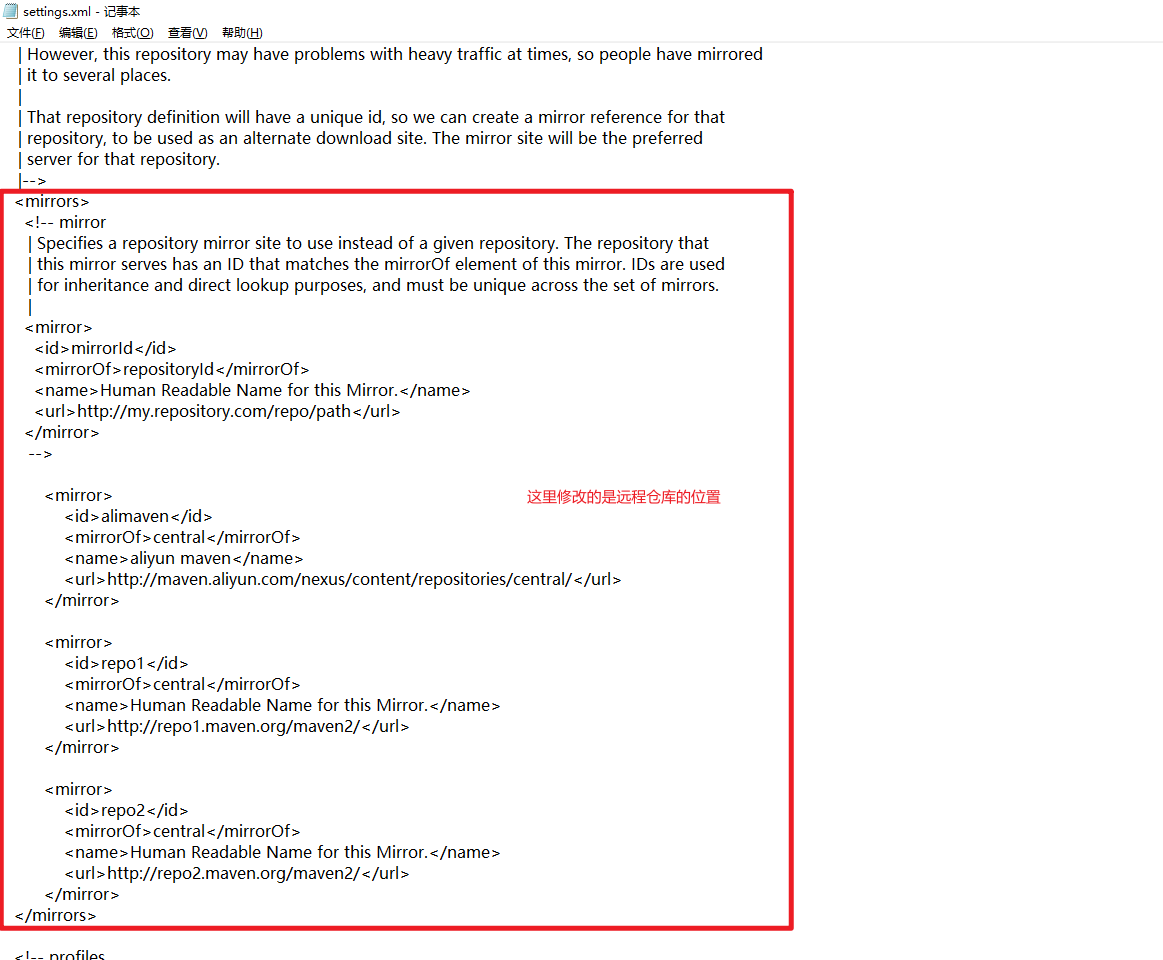
<mirrors><!-- mirror| Specifies a repository mirror site to use instead of a given repository. The repository that| this mirror serves has an ID that matches the mirrorOf element of this mirror. IDs are used| for inheritance and direct lookup purposes, and must be unique across the set of mirrors.|<mirror><id>mirrorId</id><mirrorOf>repositoryId</mirrorOf><name>Human Readable Name for this Mirror.</name><url>http://my.repository.com/repo/path</url></mirror>--><mirror><id>alimaven</id><mirrorOf>central</mirrorOf><name>aliyun maven</name><url>http://maven.aliyun.com/nexus/content/repositories/central/</url></mirror><mirror><id>repo1</id><mirrorOf>central</mirrorOf><name>Human Readable Name for this Mirror.</name><url>http://repo1.maven.org/maven2/</url></mirror><mirror><id>repo2</id><mirrorOf>central</mirrorOf><name>Human Readable Name for this Mirror.</name><url>http://repo2.maven.org/maven2/</url></mirror></mirrors>
在IDEA中进行配置
打开File–new Projects Settings 配置 maven
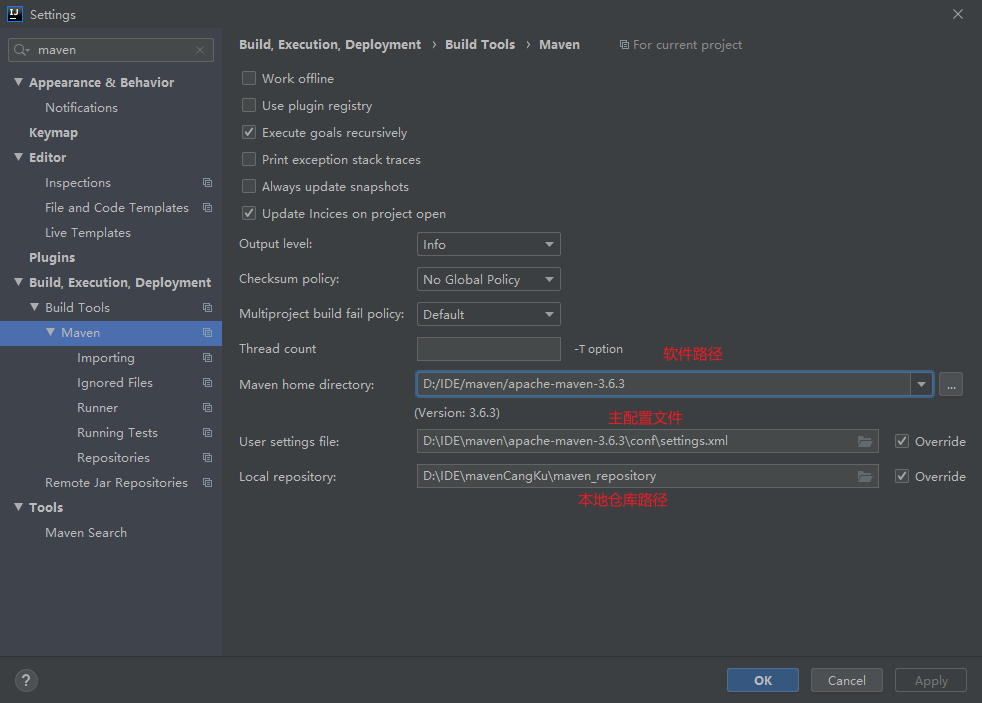
依赖管理
依赖配置
依赖指当前项目运行所需的jar,一个项目可以设置多个依赖
格式:
<!-- 设置当前项目所依赖的所有jar-->
<dependencies></dependency><!--设置具体依赖--><dependency><!--依赖所属群组--><groupId>junit</groupId><!--依赖所属项目--><artifactId>junit</artifactId><!--依赖版本号--><version>4.12</version><scope>test</scope></dependency>
</dependencies>
依赖传递
依赖具有传递性,指的是:
- 直接依赖:在当前项目中通过依赖配置建立的依赖关系
- 间接依赖: 被资源的资源如果依赖其他资源,当前项目间接依赖其他资源
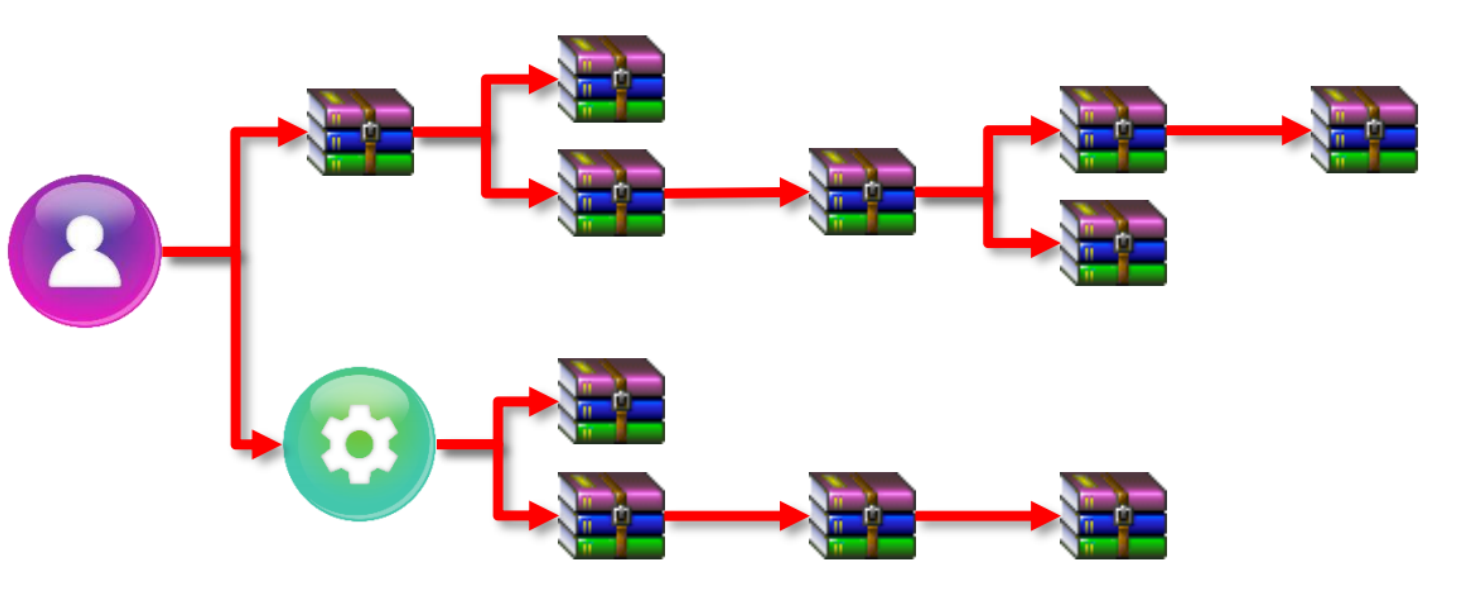
传递依赖冲突问题
- 路径优先:当依赖中出现相同的资源时,层级越深,优先级越低,层级越浅,优先级越高
- 声明优先:当资源在相同层级被依赖时,配置顺序靠前的覆盖配置顺序靠后的
- 特殊优先:当同级配置了相同资源的不同版本,后配置的覆盖先配置的
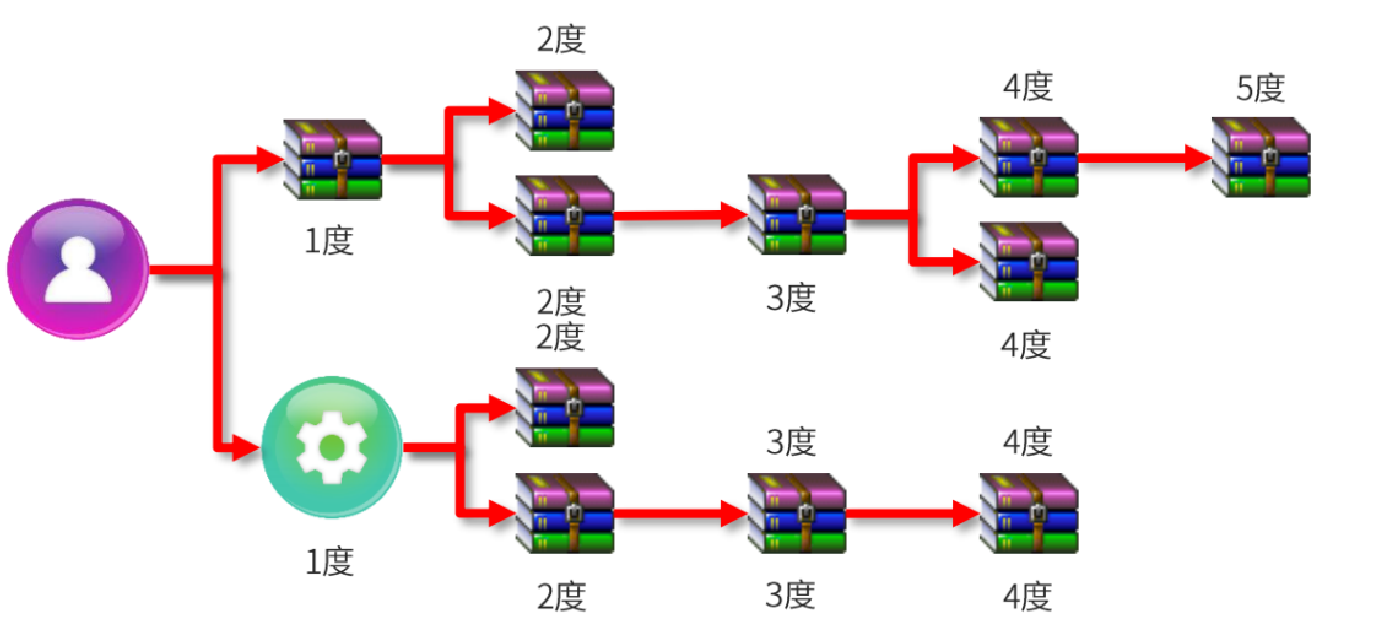
可选依赖
可选依赖指的是对外隐藏当前所依赖的资源----不透明
<dependency><groupId>junit</groupId><artifactId>junit</artifactId><version>4.12</version><optional>true</optional>
</dependency>
排除依赖
排除依赖指主动断开依赖的资源,被排除的资源无需指定版本–不需要
<dependency><groupId>junit</groupId><artifactId>junit</artifactId><version>4.12</version><exclusions><exclusion><groupId>org.hamcrest</groupId><artifactId>hamcrest-core</artifactId></exclusion></exclusions>
</dependency>
依赖范围
依赖的jar默认情况可以在任何地方使用,可以通过scope标签设定其作用范围
作用范围
- 主程序范围有效(main文件夹范围内)
- 测试程序范围有效(test文件夹范围内)
- 是否参与打包(package指令范围内)
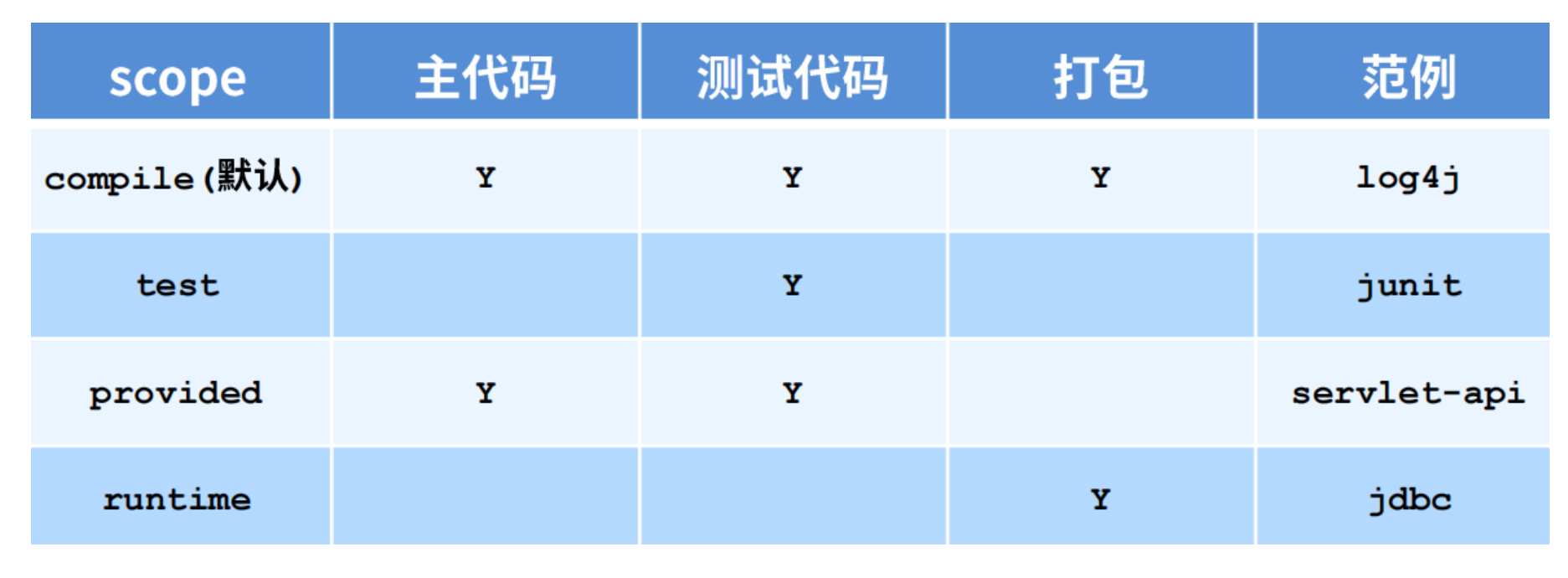







)











